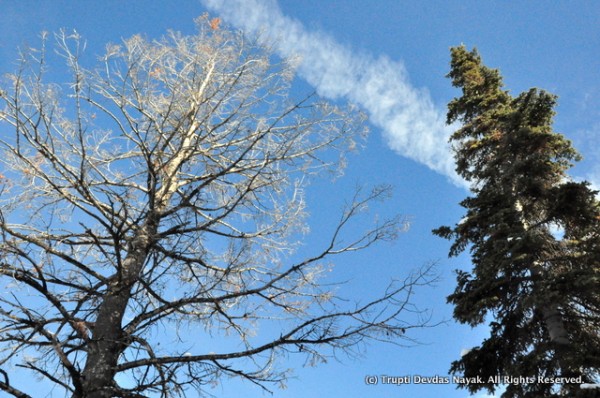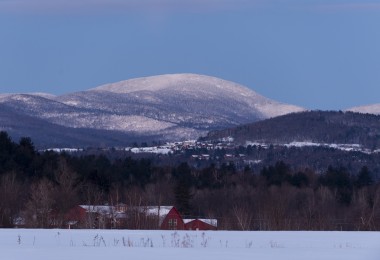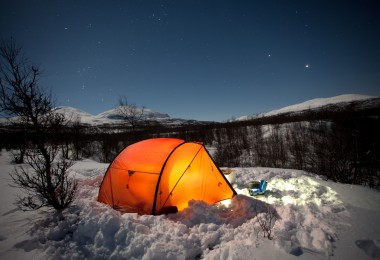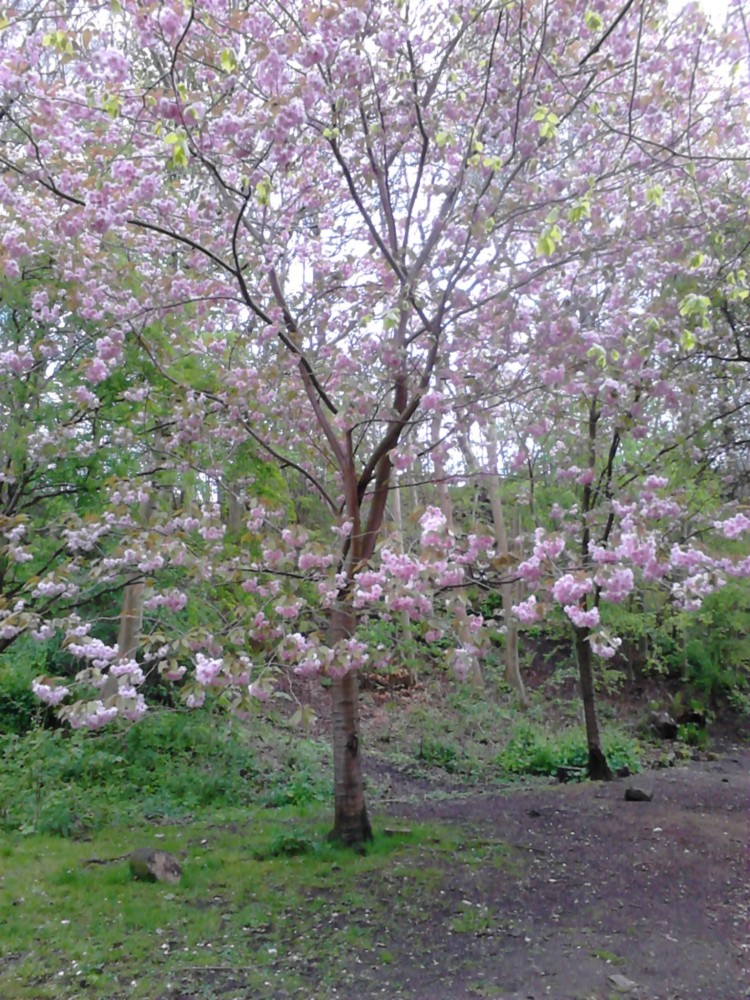Who would’ve thought that snowshoeing and birding go hand in hand? When I put on my snowshoes at Grand Targhee and got ready to explore the snow-clad trails with my naturalist guide Brigid Sinram, little did I know that by the end of the snowshoe hike, I would be an expert on mountain chickadees and red-breasted nuthatches, among many other things!
Grand Targhee ski resort in Wyoming is a great place for first-time snowshoers. Along with winter activities like skiing and snowboarding, Grand Targhee offers miles of pristine snowshoe trails that run through the Caribou-Targhee National Forest. I highly recommend the Naturalist guided snowshoe tours. Yes, you can rent a pair of snowshoes and take off into the backcountry on your own, but if you go with a birding and animal-track-spotting expert, you’re guaranteed to have a more thrilling adventure.
This was my first time snowshoeing and I assumed it would be similar to hiking, except that we would be wearing special shoes to walk on the snow and we would be going at a slower pace. What I didn’t anticipate was how much I would learn about animal tracks in the snow, about chirping birds, pishing and more.
Brigid Sinram was going to be my Naturalist guide for the afternoon. She was enthusiastic, friendly and very cheerful – I liked her immensely within a few minutes of our introductions. After putting on our snug snowshoes, we headed off to explore the trails at Grand Targhee.
The Greenhorn snowshoe trail is a mile-long loop that connects with the mile-long Valley Overlook trail. We walked along the trail towards a grove of pine trees where a group of birds were having a merry chirping party. Brigid indicated that we should move slowly and silently so as to not scare away the birds. As we got closer to the trees, Brigid told me all about pishing, which is the art of making birdcalls to engage the birds’ curiosity.
Using your mouth to make a few well-practiced sounds, pishing works uncannily well in attracting the birds’ attention. Pishing is easy to learn but should never be used in an unrestricted manner. It’s important to understand the situation and environment before enticing the bird to show itself in full view. Brigid was very knowledgeable on pishing and gave great tips on when to pish. One should not pish near sensitive areas like nesting sites, or when a rare bird has been spotted. It’s also not a good idea to pish if the weather is too cold and birds are huddled together for warmth.
In our case, the sun was shining brightly, with gorgeous cloudless blue skies and the weather was perfect for both birds and animals to be out and about. We also saw flocks of birds sitting high up in the trees, chirping away audibly. We approached a nearby Douglas Fir and saw fluttering high above us, as birds flew around from branch to branch. We stopped at a safe distance from the tree and stood silently, observing.
Brigid pished a couple times. There was a sudden flutter of wings from above, we could sense the birds’ curiosity and eagerness to see where the pishing sound was originating from. Brigid pished once more. A red-breasted nuthatch suddenly appeared on the branch above our heads, dancing about animatedly, looking around in all directions trying to figure out what was causing this strange noise. It was a thrilling experience to be able to observe birds in their natural habitat from so close!
We continued snowshoeing on the Greenhorn snowshoe trail after the red-breasted nuthatch got bored with us and flew away. Brigid mentioned other birds she had seen that season. Woodpeckers are often spotted near Aspen trees, and one can hear their distinctive pecking sound from faraway.
Mountain chickadees are a merry lot and we heard several of them as we approached a grove of Aspen trees. Brigid pointed out to several deep holes high up in the aspen bark, which is a clear indication of woodpecker activity and nesting. Oftentimes, after the woodpecker has left its nest, the holes in the tree are used for shelter and nesting by other birds. The woodpeckers do a great job with building safe, warm, cozy nests, so other birds take advantage of a nest site that has already been set up for them.
As we stood there looking at the woodpecker nests in the Aspen trees, a mountain chickadee came along. Brigid pished just once and the chickadee started doing all kinds of acrobatics in the air, it even stood upside down on the branch as it looked around to figure out where the sound came from!
As we continued snowshoeing, I fell in love with how peaceful everything felt when covered with snow. There were a handful of snowshoers ahead of us, and yet there was serene silence all around. The only sounds I heard were the crunching of snow beneath my feet and the occasional birdsong or rustle of leaves. Snowshoeing is such a meditative activity, as is hiking, but the snow dampens loud sounds more effectively and makes us feel like we’re all by ourselves in this white winter wonderland. It is a wonderful feeling of calm.
Another exciting thing to observe when snowshoeing are the animal tracks! It’s the ultimate thrill to explore off-trail whenever something interesting catches your fancy. We saw a lot of animal tracks in the snow and anytime an interesting one caught our eye, we would waddle over in our snowshoes to see things closer. Brigid was amazing with spotting animal tracks and knowing exactly what the animal might have been doing at the time. Different animals make different tracks in the snow depending on their gait and weight, so a hopping rabbit’s track is going to look very different from a strolling deer’s track or a scampering squirrel’s track.
There are three main animal track patterns you should know about. “Bounding patterns” are typical of animals with long bodies like stoat or ermine, “alternating patterns” are typical of animals like deer and mountain lions and “hopping patterns” are typical of rabbits and mice. Of course, we didn’t actually see ermine or rabbits or deer, but just seeing their tracks in the snow made me realize that we’re not alone in the forest. There is life and activity everywhere, it’s just not visible to us. Brigid pointed out that right now there might be mice underneath the thick layer of snow, burrowed deep into their warm homes. Or a squirrel might be sitting high up on a branch, watching us as we walked close to its cache of acorns. If not for Brigid, I wouldn’t have noticed the litter of acorn shells and pine cone debris near tree trunks, which is where the squirrel would’ve sat as it feasted on nuts.
After a few hours of snowshoeing, I was totally in love with the activity. Snowshoeing allows us to not only get outdoors and explore backcountry trails in winter, but it also enables us to get closer to observing animals and birds in their natural winter habitat. It gives us the opportunity to learn about incredible winter adaptations and survival instincts of creatures big and small, which have mastered their cold surroundings.
Thanks to my naturalist guide Brigid Sinram, I learnt fascinating facts about birds, wildlife, animal tracks and the ecology of Caribou-Targhee National Forest, all while enjoying an exhilarating workout on the snowshoeing trails at Grand Targhee ski resort. So, what are you waiting for? Get your snowshoes on and pick a trail to explore!
Disclosure: Ski Idaho, Idaho Tourism and Grand Targhee provided for my travel and accommodation in exchange for writing about my experience at Grand Targhee ski resort. Regardless, everything I have said in this post reflects my honest observations and opinions.




















Leave a Comment